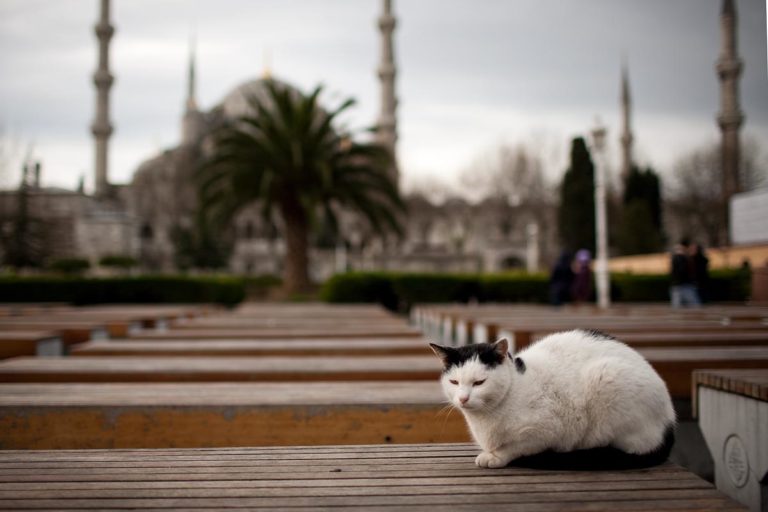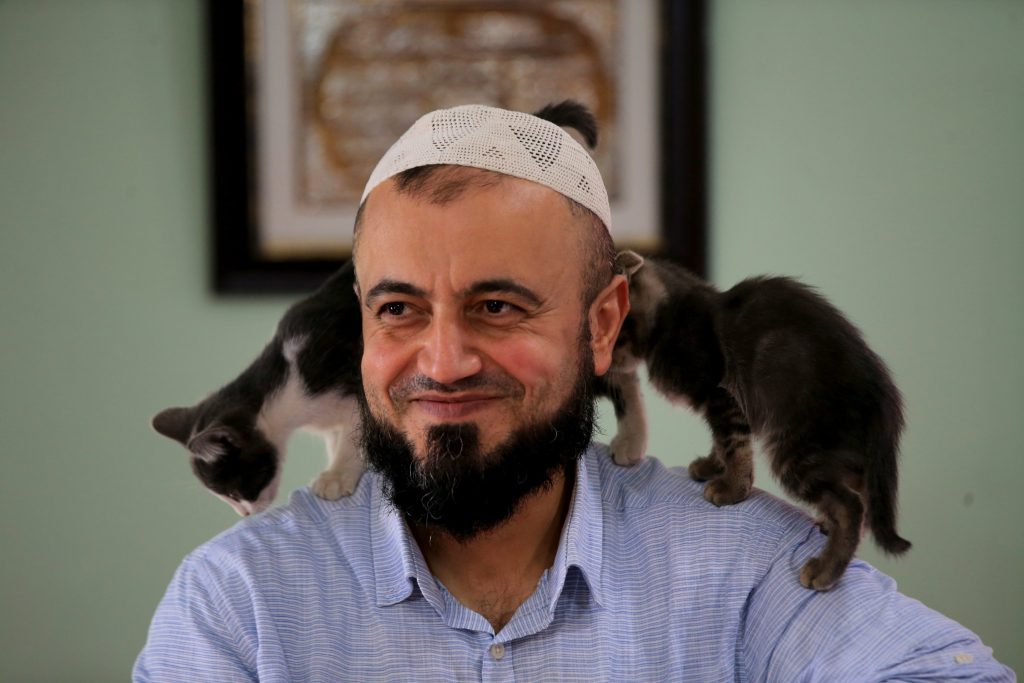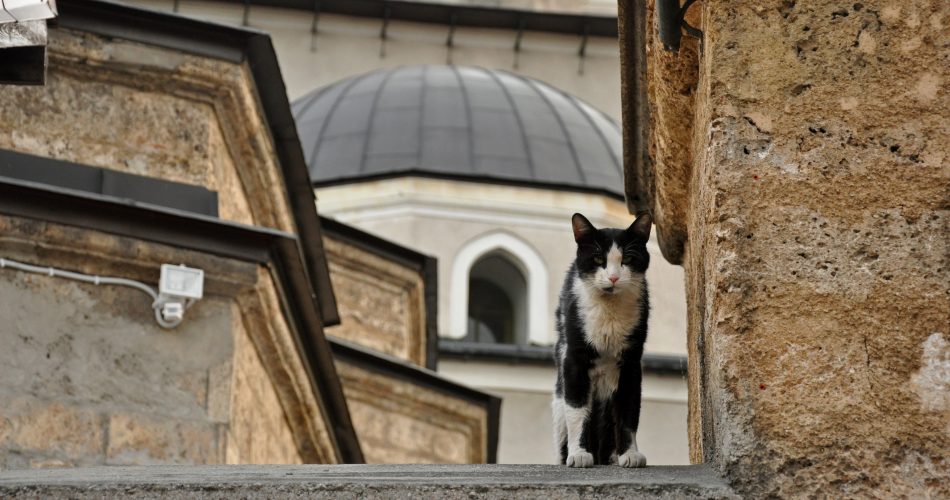Cats hold a significant and respected place in Islamic culture, both in historical contexts and in religious texts. Revered for their cleanliness, independence, and gentle demeanor, cats have been depicted as noble and cherished animals in many Islamic stories and traditions. Among the most influential stories involving cats in Islamic history is one that features the Prophet Muhammad and his deep affection for cats, with particular reference to the famous tale of his own beloved cat, Muezza. Cats’ status as beloved creatures in Islam is rooted not only in their companionship with the Prophet but also in the symbolic values they represent, such as cleanliness, protection, and tranquility.
The Prophet Muhammad’s Love for Cats
Islamic teachings, particularly those found in Hadith (sayings and actions of the Prophet), highlight the kindness and compassion that the Prophet Muhammad showed toward animals, and especially his admiration for cats. Several Hadiths recount how the Prophet Muhammad had a particular fondness for cats, a relationship that elevated their status in Islamic culture.
One of the most famous stories involves the Prophet’s own cat, Muezza. It is said that once, while the Prophet Muhammad was performing ablutions for prayer (wudu), Muezza was sleeping on the sleeve of his robe. Rather than disturbing the cat, the Prophet Muhammad cut off the sleeve of his robe when he needed to stand and perform his prayers. This act of kindness and consideration for the cat’s comfort has been widely circulated in Islamic folklore and is often cited as an example of the Prophet’s gentleness toward animals.
Another popular story about the Prophet and cats involves Muezza saving the Prophet’s life during a time of danger. According to some accounts, a snake entered the Prophet’s home, and Muezza killed it before it could harm Muhammad. This heroic act further solidified the bond between the Prophet and his cat, showcasing the idea that cats were not just companions but protectors as well.
These stories emphasize the importance of mercy, compassion, and respect for all living creatures—values that are central to Islamic teachings. In the context of cats, these values have shaped the way Muslims view and treat cats, often with a sense of reverence and care.
Cats and Their Symbolism in Islam
Beyond the personal stories of the Prophet Muhammad’s affection for cats, there are several reasons why cats are highly regarded in Islamic history and culture. Cats are often viewed as symbols of cleanliness and purity, qualities that are highly valued in Islam. In a religion that places great emphasis on cleanliness, cats’ natural grooming behavior and their tendency to remain clean and free from parasites made them particularly admired animals.
In Islamic tradition, it is believed that cats are ritually clean animals, and it is even said that a cat’s saliva is considered pure. This belief is reflected in the fact that Muslims are allowed to keep cats as pets, and it is generally considered permissible for them to live inside the home. In contrast to other animals that may be seen as impure, cats are viewed as pure, and there is no religious prohibition against owning or interacting with them. As a result, cats have been an integral part of Muslim households for centuries, offering companionship, protection, and spiritual symbolism.
Another important aspect of cats in Islam is their connection to the concept of tranquility and peace. Cats are known for their serene and calm demeanor, and this peaceful nature resonates with the Islamic ideals of patience, humility, and inner peace. In Islamic culture, the presence of a cat is often seen as a source of comfort, providing a sense of calm and soothing energy to the household.

The Reverence for Cats in Islamic Art and Literature
The reverence for cats in Islamic history and culture has also been reflected in art and literature. Throughout the centuries, cats have appeared in Persian miniature paintings, Islamic calligraphy, and other forms of art. These depictions often emphasize the cat’s graceful form, its mysterious eyes, and its dignified posture. The cat has been portrayed not only as a domestic animal but as an emblem of beauty, elegance, and refinement.
One of the most famous artistic representations of cats in Islamic culture comes from the Persian poet and philosopher, Rumi. In his work, Rumi often used the image of a cat as a metaphor for divine beauty and wisdom. Cats’ independence, their self-contained nature, and their ability to remain calm in any situation made them ideal symbols of spiritual insight and enlightenment in Sufi mysticism, a tradition deeply rooted in Islamic thought. In these spiritual traditions, cats represented the idea of detachment from worldly concerns and the pursuit of inner peace and understanding.
Cats in Islamic Folklore and Traditions
In addition to the Prophet Muhammad’s personal connection to cats, Islamic folklore is rich with stories that highlight the mystical qualities of cats and their role as protectors and symbols of good fortune. Cats are often portrayed as intelligent, intuitive creatures who possess an uncanny ability to sense danger or supernatural forces. For instance, many stories tell of cats acting as guardians, protecting their owners from evil spirits or intruders. In some Islamic folk traditions, cats are even believed to have the ability to ward off the evil eye, a belief that has its roots in ancient Middle Eastern superstitions.
A common superstition in some parts of the Islamic world holds that a cat can protect a house from harmful spirits, particularly those associated with illness or bad luck. Cats’ presence in homes is seen as a protective barrier, a belief that aligns with the broader Islamic view of cats as pure and spiritually beneficial creatures.
In addition to their protective and purifying qualities, cats are also associated with good fortune in many Islamic cultures. The image of a cat, particularly a black cat, is believed to bring blessings and prosperity. In some traditions, it is said that a cat’s presence can attract wealth and success, further enhancing its status as a revered animal in Islamic society.

The Story of the Prophet’s Cat: The Tabby and the Teachings of Compassion
Among the most important stories about cats in Islam is the narrative of the Prophet Muhammad’s cat, Muezza. This story is more than just an account of a beloved pet; it embodies the Islamic values of mercy, kindness, and empathy. Through the Prophet’s treatment of Muezza, Muslims are reminded of the importance of showing compassion to all living beings, no matter how small or seemingly insignificant.
The love the Prophet had for his cat reflects a broader theme in Islamic teachings: that mercy and kindness toward animals are acts of devotion that reflect one’s character and relationship with God. In Islam, the treatment of animals is seen as a reflection of one’s piety, and those who treat animals with cruelty or neglect are warned against such behavior in the Quran and Hadith.
In particular, the famous story of Muezza has had a lasting impact on the way Muslims view cats. The Prophet’s gentle handling of his cat, even to the point of cutting his robe rather than disturbing the sleeping animal, is seen as an ideal example of how to treat animals with care and respect. This story has been passed down through generations and serves as an enduring symbol of compassion in Islam.
Conclusion: The Enduring Reverence for Cats in Islamic Culture
The special bond between cats and Islam is reflected in the love and respect for these animals throughout Islamic history and culture. From the Prophet Muhammad’s affection for his cat Muezza to the belief that cats embody qualities of cleanliness, purity, and tranquility, cats have held a revered place in the hearts of Muslims for centuries. Through their roles as protectors, companions, and symbols of spiritual insight, cats have come to represent the deeper values of kindness, mercy, and humility that are central to the Islamic faith.

In Islamic folklore, cats are not just animals; they are seen as spiritual beings with protective powers and divine significance. As companions to the Prophet Muhammad and revered figures in Islamic art, literature, and traditions, cats continue to occupy a cherished and enduring place in the lives of Muslims around the world. Whether as a source of comfort, a symbol of divine beauty, or a reminder of compassion, cats will forever remain intertwined with the rich tapestry of Islamic culture and history.
